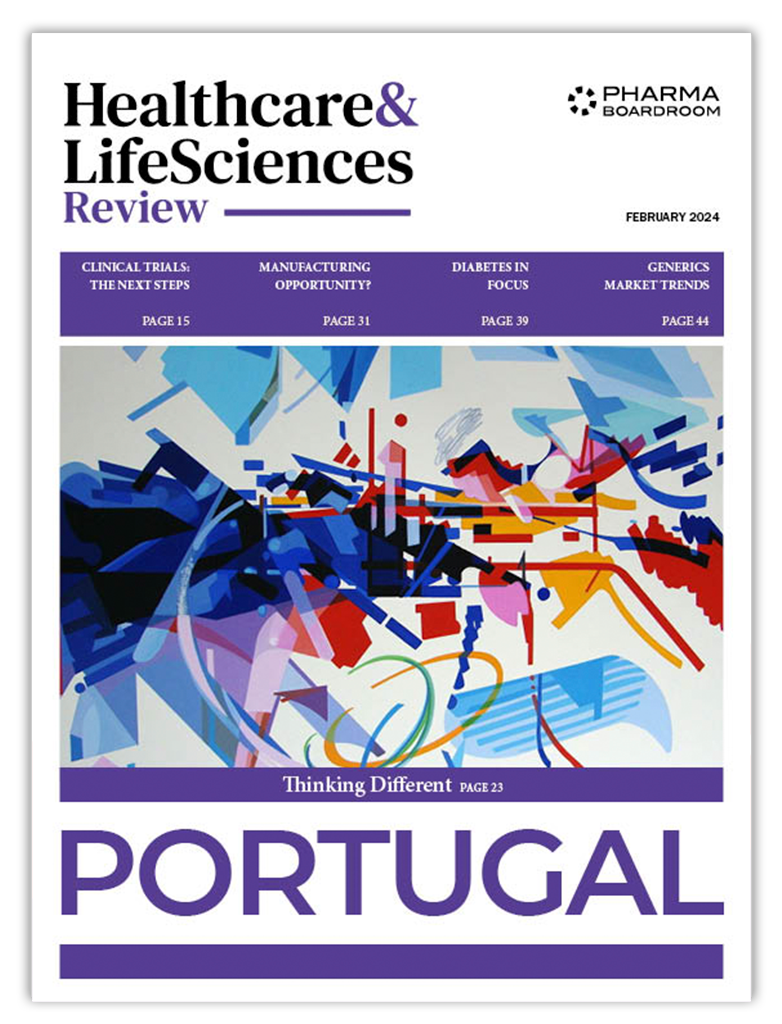ZeClinics is a Spanish CRO specialized in zebrafish research. Simone Calzolari, CEO, explains the technical and financial advantages of using zebrafish – not legally recognized as animals – in pharmaceutical development. The CEO explains that there are
at least ten ongoing clinical studies with molecules that were screened with zebrafish, but none have been commercialized yet, adding that the fish is useful to study cardiovascular and metabolic conditions, as well as cancer. Although the US FDA and EMA do not currently allow companies to include zebrafish studies in Investigational New Drug (IND) applications, Calzolari believes that both regulators eventually will.
Simone, can you begin by walking our audience through the story of ZeClinics?
ZeClinics was founded to challenge how preclinical research was performed. We, the four founders, believed preclinical drug discovery and development should be more predictive, so clinical trials would have better chances of success. Javier Terriente and I were working with zebrafish in the laboratory doing research projects, and soon realised that the properties of zebrafish could be translated into industrial use.
After Ignasi Sahún and Davide D’Amico joined the team, in 2012-13, we created the company with the intention of being a contract research organisation (CRO) specialised in zebrafish research. What we do offer tailored solutions on a great number of research areas, partnering with pharma, agrochemical, food, cosmetic companies and academic research institutions.
Although it began as a startup developed in a university setting, it is not, technically, a spin-off since there was no intellectual property involved but rather knowledge gathered in an academic setting; the Pompeu Fabra University did not participate in the initial capital injection. Today, the company offers services to private and public organisations but at the same time develops its own internal projects.
What led you and the team to believe in the potential of zebrafish?
The technical and economic advantage of using zebrafish is due to the ability to study multiple organisms in a reduced space. Zebrafish are live organisms that have a heart, a brain and liver, and can be treated exactly like mice. Until zebrafish reach the stage of independently feeding larvae, they are not legally recognised as animals but have functional organs; they are a fantastic tool in the world of research because the process can be fast, easy and economic while maintaining the same biologic relevance as more “complex” animals.
The zebrafish model fulfills the purpose of reducing, refining and replacing – the so-called “three Rs” – the use of experimental animal models. Most of our research is conducted with zebrafish larvae before 5 days post fertilization, meeting the standards set by the European Commission Directive of 2010. The zebrafish model represents a viable alternative that bridges the gap between in vitro and mammal models and can lead to a reduction of animals used in later research phases.
Arguing that zebrafish larvae have evolved into a very attractive model for drug discovery, Roche and other Big Pharma players have taken an interest in the sector. How widespread is the use of zebrafish across the industry and what makes ZeClinics an appealing CRO partner?
The use of zebrafish in the pharmaceutical industry has increased exponentially in recent years because it is not a new thing; the fish is well-known in the pre-clinical setting. Many pharmaceutical companies have opened their own zebrafish facilities, including Roche, as well as other CROs.
Today, zebrafish are a fantastic tool for initial discovery, pre-regulatory phases, or final discovery stages. However, murine animal models are required when filing INDs. There are at least ten ongoing clinical studies with molecules that were screened with zebrafish, but none have been commercialized yet. In terms of therapeutic areas, zebrafish can help discover molecules for most diseases except for dermatological or pulmonary due to physiological differences with humans. They are useful to study cardio, metabolic conditions and cancer, just to name a few.
We are currently involved with multi-lab initiatives that promote the regulatory validation of zebrafish that aim to demonstrate that it can be used as a great tool for both the pre-clinical and clinical phases of research and development. The FDA and EMA will eventually accept studies involving zebrafish, thus allowing sponsors to include them in Investigational New Drug (IND) applications.
While nowadays you can find many CROs working with zebrafish, we differentiate from competitors for several reasons: first because we were pioneers in the sector, second because of our wide portfolio of services and third because of our genetic capabilities. ZeClinics has been using CRISPR/Cas9 technology for six years and is able to do unique models at a genetic modification level, becoming a world leader in that sector. We own licenses given by the two leading institutions, the Broad Institute and ERS Genomics.
The company claims that its technology and expertise can reduce by up to 10-fold the time and cost investment of R&D projects. Can you explain how it is able to do so?
The reason is that we can test 96 different conditions on a 96-well plate, which usually only stores cells. This allows us to do high-throughput screenings, testing libraries of molecules at the same time which is impossible with other animal models. Adult zebrafish have a length of approximately 3-4 centimetres, but we work with embryos that are just one millimetre in diameter.
You mentioned earlier that ZeClinics offers its services to the industry but also develops its own projects. Can you elaborate on that?
We have already had a successful spinoff called ZeCardio Therapeutics which was born out of an internal discovery project. The company has three cardiovascular programs: one for cardiomyopathy, another for cardio protection, and a last one for cardio regeneration. At the same time, we are incubating projects within onco, Parkinson’s, metabolic and GRIN-related disorders .
How would you describe the advantages and disadvantages of being based in Barcelona?
Barcelona has a strong life sciences ecosystem, one that supports new ventures; the city is increasingly seen as a biotech hub which gives us a privileged position. Moreover, there is access to funding at a regional and national level. We have thought about moving but opted to stay here for both personal and professional reasons.
Did the pandemic have any significant effects on ZeClinics and your regular operations?
Fortunately, our sector was not as affected as others; we did not stop our activities throughout the pandemic. Our lab closed only for about three weeks. On the R&D side, we prioritised external projects and had to put on hold some internal ones. Since ZeClinics had been working with a hybrid model (part remote, part in person) for some time, the organisation managed to adapt quickly.
To conclude, is there a final message you would like to send to our readers regarding the use of zebrafish in R&D and the future of ZeClinics?
Our expectation is that zebrafish will continue its momentum with the industry and regulators. The use of this tool is gaining ground beyond life sciences as other industries such as cosmetics, chemical, agro chemical and others. From a company point of view, we believe that services for external organisations will also continue to grow as our portfolio increases to include more genetics services. New R&D projects are on the way and those we already have should advance, as well.







